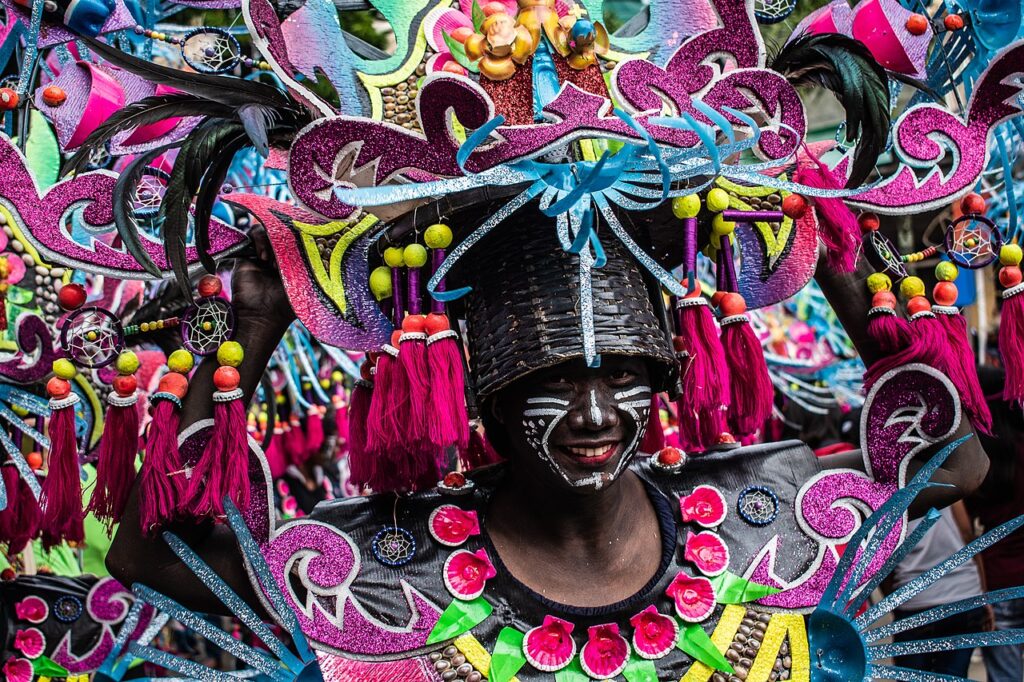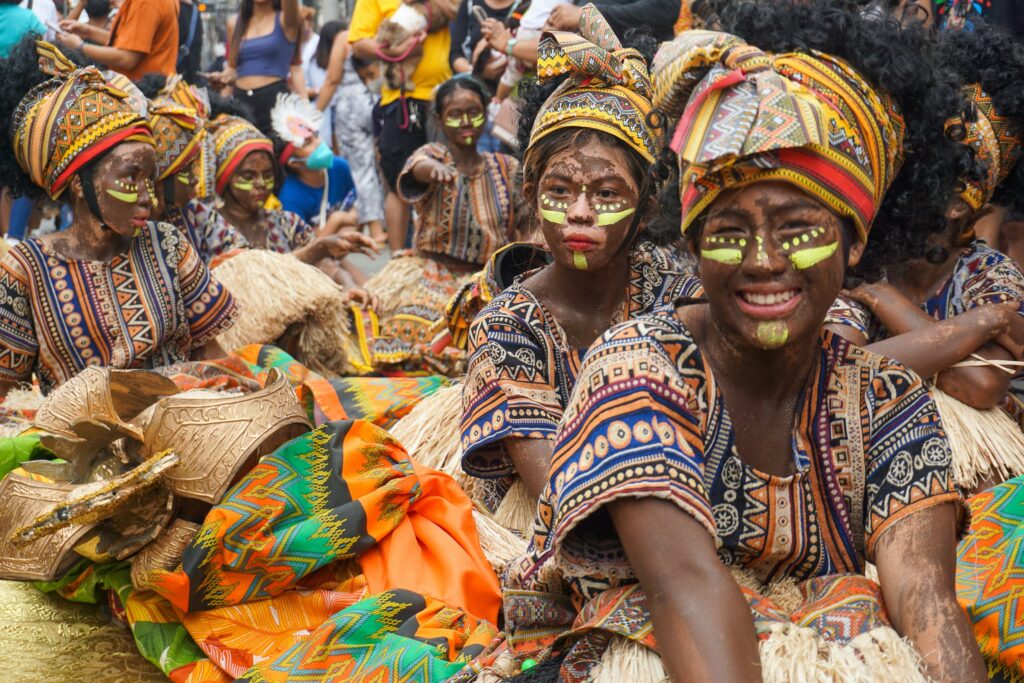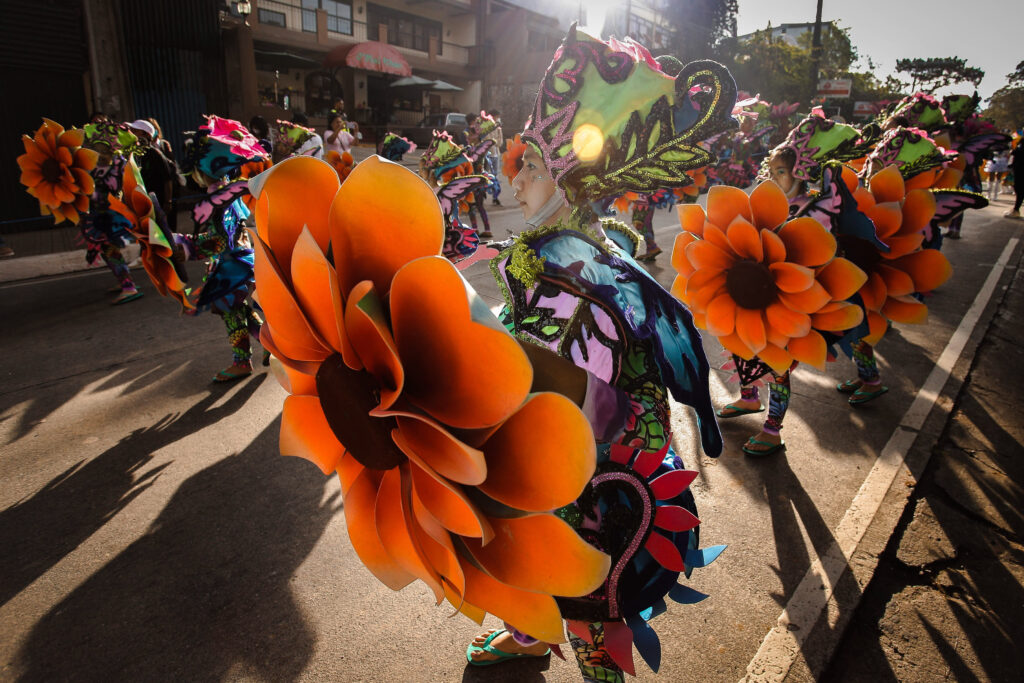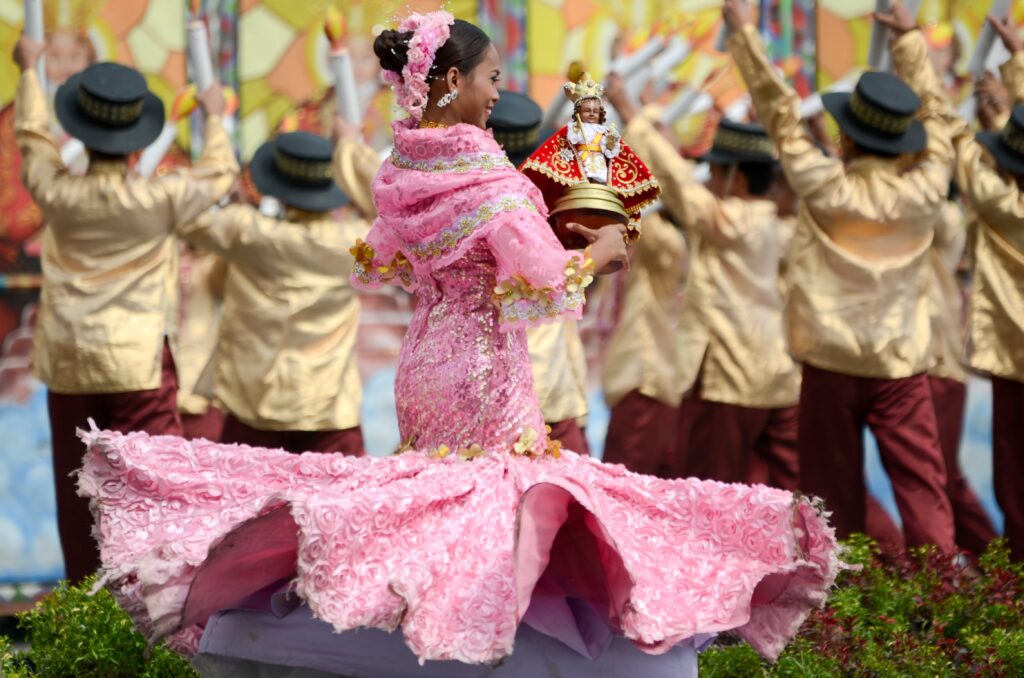If you’d like to travel more often in 2024 and you’re determined not to be a dayuhan sa sariling bayan (foreigner in one’s own land), then you should start attending festivals that take place in different parts of the country all year round. A lot of these festivals, commonly called fiestas, date back from the Spanish colonial period and are deeply rooted in Catholicism with unique cultural elements. The newer ones, on the other hand, were created to highlight the place’s primary produce or product. Check out this list of popular and interesting festivals, so you can plan your trip.
JANUARY

Ati-Atihan
Touted as the oldest, thus the tag “Mother of all Philippine Festivals,” the Ati-Atihan is held every January in Kalibo town and across the Aklan province in celebration of the Feast of the Sto. Niño (Holy Child Jesus). This year, the festivities run from the 15th all the way to the 21st, when the main Mass will be held for pilgrims and followed by the grand procession. Main participants in the parade dress up and dance, as the festival’s name suggests, like Atis or Aetas, who were the earliest settlers in the town.
Sinulog
Sinulog is another festival that celebrates the Feast of the Sto. Niño, and many say this is the biggest. Its host city, Cebu, lines up weeks-long activities that culminate in the parade-cum-street party where devotees hold their prized images of the Holy Child Jesus while dancing and yelling, “Pit Senyor!” The culminating activity is held every third Sunday of January, which, this year, falls on the 21st.

Dinagyang
Yet another festival dedicated to the Sto. Niño is Dinagyang, which takes place on the fourth Sunday of January in Iloilo City. This year, it falls on the 28th and has the theme, “Pagdayaw kay Señor Sto. Niño, Padayaw sang mga Ilonggo” (Praise to Señor Sto. Niño, dance of the Ilonggos). The highlight is also the grand parade that has participants donning colorful costumes and dancing to lively beats.
FEBRUARY

Panagbenga
Flowers in Baguio City bloom the brightest in February, thus the creation of its very own festival called Panagbenga. It means “season of blooming” in the Kankanaey language spoken by the indigenous people in Northern Philippines. A grand parade of flower-laden floats is the highlight of the festival, which this year happens on the third day of the second month.
Paraw Regatta
For sailing enthusiasts, the Paraw Regatta Festival is something to look forward to as it features the traditional Visayan double outrigger sailboat, called paraw, in the oldest traditional craft event in Asia. It happens every third weekend of February in the Arevalo district in Iloilo City.
MARCH
Sulyog
Every ninth day of this month, the people of Bongabong in Oriental Mindoro honor their town’s patron, St. Joseph, with a festival called Sulyog. Its named is a blend of the Mangyan term suli, meaning “banana,” and the Tagalog word for coconut, niyog, for these are the main agricultural crops of the town. During the festival, performers portray the harvesting of bananas and coconut and, afterwards, offering to St. Joseph.
Moriones
The Moriones Festival takes place every Holy Week in the island-province of Marinduque. This year, it runs from 24 March (Palm Sunday) to 30 March (Black Saturday). The celebration is marked by participants, garbed in costumes and masks typical of Roman soldiers in Biblical times, looking for a centurion named Longinus. He’s supposed to have pierced the side of the crucified Christ, with the blood hitting his blind eye and miraculously healing it.
APRIL
Hugyaw sa Kadagatan
The Kauswagan town in Lanao del Norte celebrates its abundance in coastal resources, such as fresh fish and shells, with a festival called Hugyaw sa Kadagatan (Sea Dancing Festival). It happens every 14th day of the month as the culmination activity of the town’s week-long celebration of fiesta and foundation day. The highlight of the festival is the fluvial parade of floats made of bamboo rafts that are tagged by pump boats.
Rodeo Masbateño
How would you like to be a cowboy for a day? Join the Rodeo Masbateño Festival, which, this year, happens from 9 to 13 April in Masbate City. Activities include a parade of horses and a showcase of bull-riding and bull-whipping.
MAY
Pahiyas
Known as one of the most colorful and popular festivals in the country, the Lucban San Isidro Pahiyas Festival is held every 15th of May in Lucban town in Quezon. It serves as a thanksgiving to the farmers’ patron saint, San Isidro de Labrador, for a bountiful harvest. The townspeople showcase their produce by decorating their houses with produce and other agricultural products, plus lots of pieces of leaf-shaped wafer called kiping.
The merry month of May is synonymous with tropical flowers that bloom practically everywhere, thus the staging of Flores de Mayo (Flowers of May) parade in many places in the country. It then culminates in the Santacruzan procession featuring the town’s loveliest residents, which now includes all genders, dressed up as royalties of lore. The last in the long list of participants holds the most significance as Reyna Elena in commemoration of Queen Helena’s successful search for the Holy Cross.
JUNE
Parada ng Lechon
The Feast Day of St. John The Baptist, which happens every 24 June, takes an interesting turn in Balayan town, Batangas. Aside from the customary basaan, or the dousing of water, residents also treat their guests with the Parada ng Lechon (Parade of Roasted Pig) that can be sampled at the end of the procession. Yes, the roasted pigs make it to the end because they are wrapped in transparent plastic to dissuade onlookers from taking a piece off them.
Pintados-Kasadyaan
In Leyte, the Feast Day of their own Señor Santo Niño is celebrated every 29th day of June. It coincides with Kasadyaan Festival, which takes its name from the Visayan term for “merriment or happiness.” This festival also commemorates the pre-Spanish tradition of tattooing among warriors called pintados. Activities include competitions in sports and talents, as well as trade fairs, music festivals, concerts and entertainment shows.
